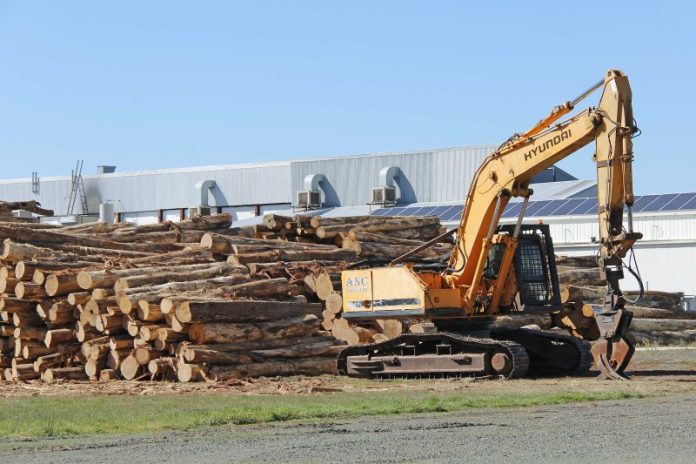
Environmental activists have called out the removal of large volumes of fallen timber from the Wombat State Forest as being done “under the guise of reducing fire risk”.
The Department of Energy, Environment and Climate Action is removing trees and debris that fell during the 2021 storms but environmental groups argue the works are destructive and ineffective for fire management.
Wombat Forestcare convenor, Gayle Osborne, said DEECA acknowledged it was fine fuels – not large fallen logs – that drove bushfire behaviour.
“Yet DEECA’s storm recovery operations continue to remove these ecologically important logs,” Ms Osborne said.
“This process leaves behind bark and fine debris that increase, rather than reduce, fire risk, by creating a more flammable forest floor.”
Ms Osborne said salvage logging appeared to be occurring in a Special Protection Zone, areas that were legally reserved for conservation and in which timber harvesting was prohibited.
“The use of heavy machinery in these zones contradicts their conservation purpose and may breach their legal status,” she said.
“There are many reasons these logs should remain in the forest.
“They are a critical part of the ecosystem – providing habitat for small reptiles and mammals, food for fungi, and moisture retention that helps keep the forest floor damp.”
Ben Gill, nature conservation campaigner with the Victorian National Parks Association, said what was happening in the Wombat Forest was “deeply concerning”.
“Salvage logging is being disguised as fire risk reduction, but it flies in the face of what science tells us,” Mr Gill said.
“We should be protecting these forests and investing in real climate resilience, not degrading habitat for some of our most vulnerable species.”
A DEECA spokesperson said DEECA was managing works at several sites in the forest following the impacts of the 2021 storms.
“We are removing hazardous trees and debris that fell during the 2021 storms, these are not salvage logging or commercial timber harvesting operations,” the spokesperson said.
“Larger fallen debris makes it difficult for firefighters to access the fire, delaying their response times and potentially allowing fires to grow in size and make them harder to suppress – which puts communities at risk.”
The spokesperson said DEECA was only removing trees that were necessary to reduce bushfire and other safety risks and that some debris was left to provide habitat and other ecosystem benefits.
They said DEECA engaged external consultants to undertake ecological surveys to identify threatened flora and fauna to allow for sufficient mitigation measures to be implemented at each site, before beginning operations.






